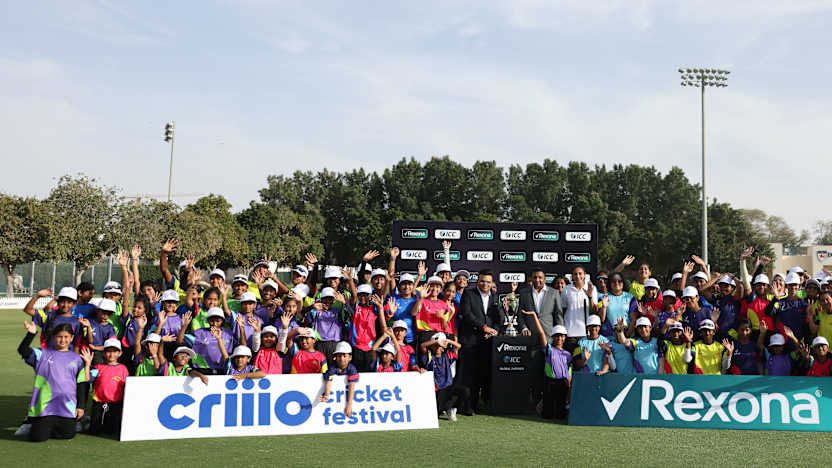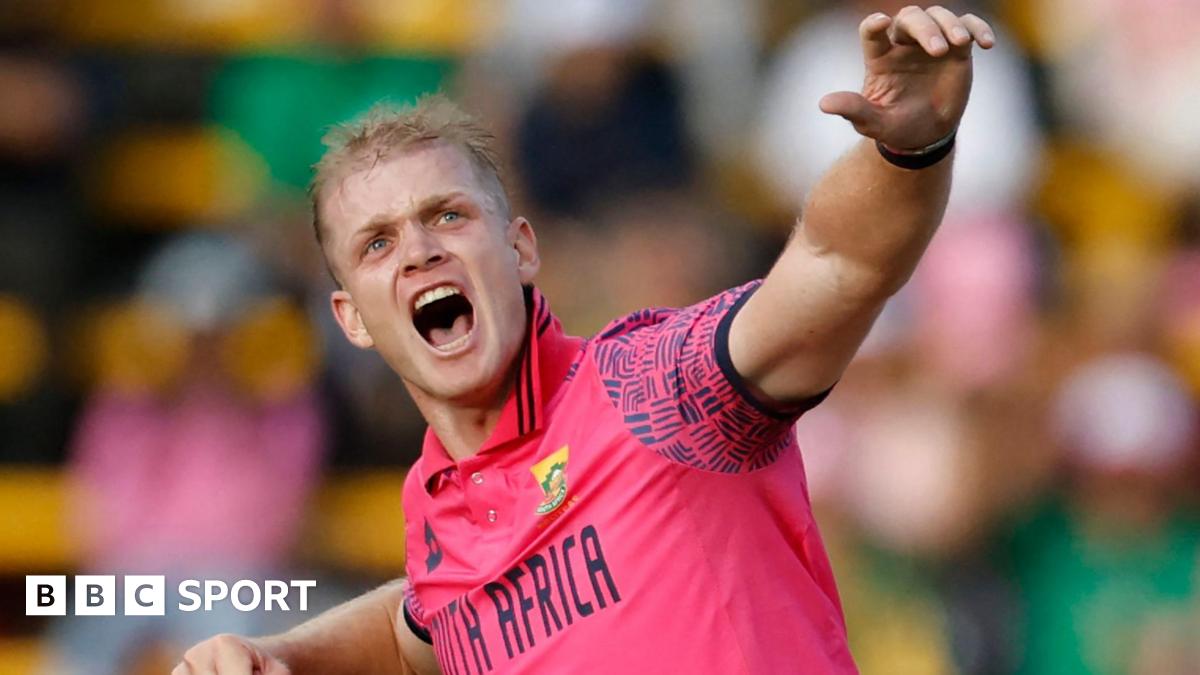Cricket Australia trying to harness the growth of cricket’s next generation
PAUL KENNEDY, REPORTER: Introducing cricket’s newest stars at the forefront of the game’s revolution in Australia.
VISHWA RAMKUMAR, AUSTRALIAN UNDER 19 BOWLER: The ideal goal would obviously be to play for Australia, the highest possibly you can, that’s obviously the dream.
HASRAT GILL, AUSTRALIAN UNDER 19 BOWLER: I just fell in love with the game more and it just took off from there, I guess.
PAUL KENNEDY: The last five years have seen teenagers of South Asian heritage enriching the sport at record levels.
BHARAT SUNDARESAN, CRICKET COMMENTATOR: Cricket is a part of life in South Asia, so we grew up with cricket. For a lot of us cricket is also the first memory we have in life so we take cricket looks like.
PAUL KENNEDY: At Melbourne Stars training, this is what the quiet transformation looks like – the great Meg Lanning giving her wisdom to teammate Hasrat Gill.
HASRAT GILL: It’s pretty surreal, I guess. Meg’s always been someone that I’ve looked up to and admired from day one. She was there for that World Cup when I first discovered the game.
PAUL KENNEDY: That 2016 tournament was held in India – where Hasrat was born.
HASRAT GILL: That World Cup made me realise that girls can play cricket.
PAUL KENNEDY: Like Lanning, Hasrat Gill has captained Australia in the Under 19s.
Her rise through the ranks has thrilled Cricket Australia, which is waiting for its South Asian boom to produce world class players.
CHRIS HATSISTAVROU, WESTERN REGION JUNIOR CRICKET PRESIDENT: The breadth of talent out there at a very young age is amazing.
PAUL KENNEDY: Cricket’s hothouses are the newly built outer suburbs of Australian cities. West of Melbourne, the sport is growing so fast they’re running out of grounds.
CHRIS HATSISTAVROU: About eight years ago we had around about 160 teams, and we’ve just clicked over 420 teams this year.
COACH: Devdash here?
CHILD: I saw him in the nets.
COACH: Devdash not here?
CHILD: No, I saw him in the nets.
COACH: What are they doing in the nets?
PAUL KENNEDY: A lot of these boys are from Indian families, and this is their first go at representative cricket.
VENESSA PEREIRA, WESTERN REGION JUNIOR CRICKET VICE-PRESIDENT: This is what they do. This is the sport they love. This is what they do, day in, day out.
They have huge aspirations. They want to be the best cricketers in this country.
ARJUN MULLAPUDI, UNDER 12 REPRESENATIVE CRICKETER: My favourite sport was soccer. My dad was begging me, not begging, but he really wanted me to try it and said you can try.
PAUL KENNEDY: Did you beg him to play cricket?
SRI MULLAPUDI, FATHER: I did practically beg him and had to drag him out to play cricket and I promised that I would coach him for the first few years so I’ve continued coaching him ever since then.
It helps a lot having people from a similar cultural background.
We’ve all lived through similar journeys, I suppose. Coming here when we were young and trying to find and make a home and living in a different country.
PAUL KENNEDY: Hasrat Gill’s family immigrated when she was three.
RUPY GILL, MOTHER: There was one movie that came out at that time, Bollywood movie, and they filmed it here in Melbourne And that was, I think, my husband’s attraction.
And I think it was just the trend that we followed.
HASRAT GILL: I’ve been very fortunate. It’s that pride in knowing that I’ve got two cultures that I represent, and I think just holding value in that is really cool.
PAUL KENNEDY: It wasn’t Bollywood that inspired Vishwa’s father to move Down Under – it was the world championship final hosted by the MCG in 1985.
BILL LAWRY (Archival, -1985): There it is, victory for India, well played.
VISHWA RAMKUMAR: Obviously my dad was passionate. Obviously from his background, you know how cricket is in India, like it’s crazy. That’s how I would say I got into cricket. From there I think I sort of had a natural ability to bowl and from there, that sort of grew into my own passion.
PAUL KENNEDY: Vishwa was a standout from age nine – always bowling against older boys.
RAM SRINIVASAN, FATHER: They saw something special in Vishwa, whatever it was. They gave him that opportunity and I hope that he continues to get the blessings and support.
PAUL KENNEDY: When Vishwa played in India this year for the Australian Under 19 team, his Aussie and Indian relatives were there.
SATYA JAGAN, SECOND COUSIN: How are you doing?
VISHWA RAMKUMAR: Good, how are you?
PAUL KENNEDY: Can I ask how you felt watching Vish playing in India for Australia?
SATYA JAGAN: I was just speechless. You know I have been manifesting this for so many years.
VISHWA RAMKUMAR: It was an unreal experience playing in India. I knew they’d be good, obviously in their home conditions, but I didn’t expect them to have that sort of talent and depth.
PAUL KENNEDY: For South Asian families, balancing education and sport is delicate but not impossible. Vishwa goes to university when he’s not bowling leg breaks.
VISHWA RAMKUMAR: That was pretty hard, especially in Year 12.
Obviously cricket, it’s something that takes quite a bit of time out of your week.
You don’t really get down time for yourself, but I guess it’s something I’m willing to do at the moment.
PAUL KENNEDY: When the Border-Gavaskar trophy begins, the Ramkumar’s will cheer for the home team – most of the time.
RAM SRINIVASAN: I keep telling Vishwa it’s Australia you have to support. I would say 51/49 or 55/45. That’s honestly.
PAUL KENNEDY: 51 per cent Australia?
RAM SRINIVASAN: India. It’s closing.
PAUL KENNEDY: Five years ago, 10 per cent of cricketers at all levels in Australia had South Asian heritage – now it’s 20 per cent.
You wouldn’t know that from looking at the professional ranks, where contracted state players from South Asian families make up fewer than 5 per cent.
At the highest level, only Usman Khawaja and Alana King have national contracts.
BHARAT SUNDARESAN: It would just one or two more to have a long run in the Australian team and you will see that change happen.
TANVEER SANGHA, NSW PLAYER: It’s 11 or 12 people get picked to be in the Australian cricket team so I think you’ve got to have the best skills in the world to get picked in that team. So I think the more you get down the bottom, the more you get feeding into the top.
PAUL KENNEDY: New South Wales bowler Tanveer Sangha, who has played T20s for Australia, was talent spotted seven years ago.
James Allsop was a teacher when he first saw Sangha in action.
JAMES ALLSOP, CHIEF OF CRICKET, CRICKET AUSTRALIA: I was umpiring and as soon as he bowled you could hear it just fizz out of his hand. He’s turning it both ways and these poor young kids had no idea what to do about it.
PAUL KENNEDY: Now Allsop is Cricket Australia’s chief of cricket – overseeing a multicultural plan aiming to double the number of South Asian players at state level by 2027.
BHARAT SUNDARESAN: Don’t be surprised if that number is more than that by the time we get to 2027 because I can see the change happening.
JAMES ALLSOP: We’re making inroads but we’ve still got a lot more work to do and we’re not shy about that.
We want to make sure that all clubs are accommodating for people from all cultural backgrounds, which has been a big focus over the last five years.
PAUL KENNEDY: The biggest challenge at this age level is to keep cricket fun so kids don’t burn out.
VENESSA PEREIRA: It was highlighted that there are some kids, like even last weekend, who were bowling 60 overs in a weekend, which is ridiculous when this is the first weekend of cricket that we’ve had.
We’re going to look at a policy to try and educate – I guess it’s the parents that sometimes quality is better.
TANVEER SANGHA: Just let the kids play. I think sometimes it can go either way, where parents put too much pressure on their kids and, like, if he’s not Sachin then he can’t play cricket. They’re really focused on him being the absolute best and they put so much pressure on the kid that it almost makes the passion come out of the kid and he doesn’t want to play cricket anymore.
COACH: Omar here?
CHILD: Yep.
COACH: You’re going to open the batting. Prathan you’re going to bat number three.
PAUL KENNEDY: How do you feel when you’re at cricket?
PRATHAN CHAUDHARY, U12 REPRESENTATIVE CRICKETER: I feel really good, sometimes nervousness, of course.
Cricket is like my favourite sport and ever since I touched a bat or bowled I just loved it from then on.
PAUL KENNEDY: Manish Chaudhary used to play in India, now his son plays.
MANISH CHAUDHARY: I remember when I was 11, all I wanted to do was swing my bat.
PAUL KENNEDY: Do you have to keep reminding yourself to not put pressure on your son?
MANISH CHAUDHARY: Yes, so like he just got out now, I didn’t say anything, I didn’t even have a chat to him because I know, I’ve got out on a golden duck. It’s a part of the process.
PRATHAN CHAUDHARY: First ball, disappointing. I came in. It came looping up.
Not happy, of course but hopefully next time.
Related
‘Listen from one ear, ignore from the other’: Former India…
India's Rohit Sharma and Mohammed Shami (AP Photo) NEW DELHI: Former wicketkeeper-batter Syed Kirmani has expressed his opinion that experienced fast bowler Mo
India faces New Zealand in budding rivalry at Champions Trophy…
State AlabamaAlaskaArizonaArkansasCa
ICC and Unilever announce landmark partnership on International Women’s Day…
The two-year partnership, kicking off at this year’s Women’s Cricket World Cup in India and running until the end of 2027, marks the world cricket governing
IPL 2025: Mumbai Indians sign Corbin Bosch as replacement for…
Mumbai Indians have signed South Africa all-rounder Corbin Bosch as a replacement for his injured countryman Lizaad Williams for this year's Indian Premier Leag











